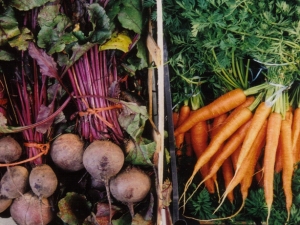 During the autumn and winter months, you will find me making soup at least a couple of times a month. It is one of the easiest things in the world to make and if you are on a budget, it is cheap, wholesome and a filling meal.
During the autumn and winter months, you will find me making soup at least a couple of times a month. It is one of the easiest things in the world to make and if you are on a budget, it is cheap, wholesome and a filling meal.
The pre-made soup market is booming, but unfortunately many of our favourite brands are chock-full of salt, sugar, fillers and preservatives that are not required by our bodies. They are also expensive. but not as expensive as buying soups from the plethora of sandwich chains that provide a large majority of the working population with our lunch.
Homemade soups are, in my opinion, much tastier and higher in nutritional value. Not only are they significantly cheaper, the other bonus is that you can include whatever ingredients you like as well as make it the consistency you like. Take me, I’m not a lover of liquidised soups, preferring chunky soups that are filling. I prefer to have something that fills my soul rather than leave me hungry. The added bonus being that I avoid the de rigueur slab of bread as I don’t need anything else to fill me up.
Transportation and storage:
- Soup can keep in a saucepan on the hob for a few days, without needing refrigeration (assuming you live in a colder climate such as the UK)
- Re-heating: warm soup in a smaller saucepan rather than re-heating the whole thing. This preserves the nutrients in the soup and also helps with your energy bills.
- Avoid boiling soup as this damages the nutrients and microwaving; nuking soup renders it unrecognisable as food by the body.
- Use a thermos to transport soup – it keeps it warm for hours and removes the re-heating requirement or the need for a bowl if you’re caught short.
Last week, I made a delicious carrot, beetroot & lentil soup which came about from the basic need to use up these root vegetables that were left over from the previous week. I wanted to share it with you all as not only is it super-filling, it is ridiculously easy to make.
Carrot, Beetroot and Lentil Soup
1 bunch of carrots (about 8 medium)
1 bunch of beetroot (about 6)
1 cup puy green or red lentils
1 onion
1 litre of chicken stock – either fresh or marigold stock cube
Method:
Chop the onions and gently cook in some olive oil.
Scrub, top and tail and chop carrots and beetroot; add to the onions.
Cook at a medium heat for 10 minutes, stirring regularly
Add lentils to the vegetables and pour the stock over the vegetables. The stock ought to reach a third higher than the vegetables. If not, then just add some more water.
Bring the soup to the boil and reduce to a simmer for 20 minutes. Check the vegetables, if they are soft then the soup is ready, if not simmer for 10 minutes longer or until soft to the touch. If you are not eating immediately, you can always turn the heat off and leave the vegetables to cook in the hot liquor without heat.
This bit is up to you – you can either liquidise the soup, mash it to squish the vegetables but retain the lentils or leave as is, like I have.
If the lentils soak up the liquid exponentially, then just add some more water.
Key Nutritional Benefits:
- Carrot and beetroot are abundant in beta-carotenes, the red/yellow/orange anti-oxidants tha are especially good in helping ward off colds.
- Lentils provide B vitamins that are fantastic for energy, immune health and mental clarity. They contain fibre to help keep you regular and bind with toxins and waste products from the body for elimination. Lentils also contain amino acids, the building blocks of proteins, a source of which is very important for those following a vegetarian and vegan diet.

